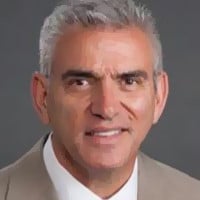I am a “late career” audiologist that specializes in vestibular disorders. It is never boring, as each patient brings with them some mystery, some challenge. There is little that is more rewarding than solving that mystery in a patient that has given up hope after months or years of symptoms with prior incorrect diagnosis and ineffective treatments.
On the other hand, routine counseling can seem a bit repetitive and an inefficient use of time. After many years, I have figured out how to ask questions, or describe pathologies and treatments in a way that elicits the fewest confused looks and questions. As a result, I have several well- rehearsed spiels I use to counsel patients. The logical next step in this process was to become more time efficient and effective by turning these spiels into short narrated PowerPoint presentations.
After taking a history, I have a pretty good idea of what the patient is dealing with and show them the selected video before we start the exam
I started with a three minute presentation on BPPV, describing the anatomy, demonstrating the Dix-Hallpike test and video of a positive posterior canal response, a clip from the aVOR app (aVOR on the App Store (apple.com) showing what is happening in the canal during a canalith repositioning procedure, and video of the proper technique for home based Epley exercises.
This accomplishes a number of things: I take the three minutes to dictate the history portion of the patients report while it is fresh in my mind, and before beginning the exam the patient understands:
- What is going on inside the ear that is causing their symptoms
- Why I need to trigger an episode to make the diagnosis
- Why they need to keep their eyes open when the vertigo hits, and
- What I am trying to accomplish and what is required of them if we go right into an Epley maneuver after a positive response.
I have been using this video for years, and when I would ask, “Any questions?” I would edit the video to answer any recurring questions. There are very few questions these days.
By having the patient view how to correctly do home Epley exercises, I have learned that many patients perform these exercises incorrectly.
Patient Education
Because we see so many patient that have been diagnosed with Meniere’s disease, when in fact they are suffering from Vestibular Migraine, I developed a presentation outlining the differences between the two. Many patients are reluctant to consider that their long standing diagnosis may be incorrect, so it helps to take them through the common presentations of both conditions.
Because so many patients (and sadly some physicians) do not understand that you can have bothersome migraine symptoms in addition to, or other than, headache, I have a presentation outlining the various symptoms that can be attributed to migraine. A frequent comment I hear after a patient views this video is, “That fits me perfectly.”
So many chronic vestibular migraine patients feel like no one understands or believes how debilitating the symptoms can be.
Previous studies regarding the benefits of educational videos in healthcare setting shows a very significant increase in understanding and decrease in anxiety, and reduces the negative effect of poor literacy associated with brochures and written educational information. Patients don’t feel like they are getting generic counseling because the narration is my voice, and there is consistency in the message delivered to each patient so there is no confusion down the road on what the patient was told.
I have had several patients ask to “video the video” on their smart phone, to show family members or review later. This is a simple way to improve patient care and understanding of their condition, while at the same time increasing efficient use of practitioner time.
About the author
 Alan Desmond, AuD, is the director of the Balance Disorders Program at Wake Forest Baptist Health Center, and holds an adjunct assistant professor faculty position at the Wake Forest School of Medicine. He has written several books and book chapters on balance disorders and vestibular function. He is the co-author of the Clinical Practice Guideline for Benign Paroxysmal Positional Vertigo (BPPV). In 2015, he was the recipient of the President’s Award from the American Academy of Audiology.
Alan Desmond, AuD, is the director of the Balance Disorders Program at Wake Forest Baptist Health Center, and holds an adjunct assistant professor faculty position at the Wake Forest School of Medicine. He has written several books and book chapters on balance disorders and vestibular function. He is the co-author of the Clinical Practice Guideline for Benign Paroxysmal Positional Vertigo (BPPV). In 2015, he was the recipient of the President’s Award from the American Academy of Audiology.






